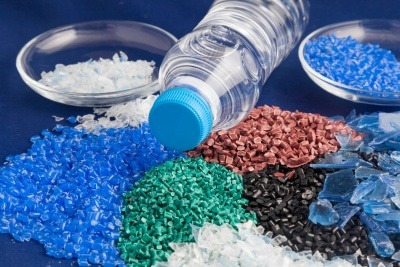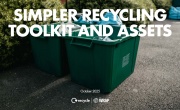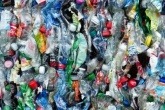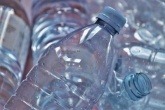What is chemical recycling? The good and the bad
The term ‘chemical recycling’ is a little obscure, encompassing a range of recycling processes, with some offering hope and some sparking scepticism. Resource investigates the technologies and processes that sit beneath the umbrella term – to unpick which might be considered good, bad, or downright ugly.
Chemical recycling, also known as advanced recycling, is a process that breaks down plastic waste into its basic chemical building blocks and then uses those building blocks to create new plastics, fuels, or other chemical products. This differs from traditional mechanical recycling, which involves melting and reshaping plastic waste into new products.
 However, there is scepticism about the environmental credentials of chemical recycling, with some suggesting that certain processes are in fact ‘greenwashing’ – not fit to take the term ‘recycling’ – and, instead, a result of the oil and gas industry ‘looking for a lifeline’.
However, there is scepticism about the environmental credentials of chemical recycling, with some suggesting that certain processes are in fact ‘greenwashing’ – not fit to take the term ‘recycling’ – and, instead, a result of the oil and gas industry ‘looking for a lifeline’.
In this feature, we look at the role that chemical recycling might play in tackling plastic pollution and establishing a circular economy for plastic production, and what challenges might yet need to be overcome.
Why chemical recycling?
Chemical recycling is becoming an increasingly popular tool in the fight against plastic pollution. According to a report by the Ellen MacArthur Foundation, only 9 per cent of all plastic waste produced in the world is recycled, and the rest ends up in landfills, oceans, or other parts of the environment. It is currently predicted that, by 2040, ocean plastic will have increased threefold and that current efforts will only reduce this by seven per cent. This has led to a growing interest in finding new ways to recycle more plastic waste and reduce its impact on the environment.
Chemical recycling serves the purpose of handling plastics that cannot be recycled through traditional mechanical processes, such as mixed-polymer waste streams or residual waste that has exhausted its potential for further mechanical processing. One of the main benefits of chemical recycling is its potential to contribute to a circular economy for plastic production, reducing reliance on virgin plastics and the fossil fuels used to create them.
The downsides of chemical recycling
Whilst chemical recycling is a very promising technology, it also presents plenty of challenges.
Firstly, it can be significantly more expensive than traditional mechanical recycling. The cost of the polymer feedstock and the value of the products made from the resulting monomers can make it economically unviable. That, and the fact that it is a nascent industry means it requires significant investment in infrastructure and technology.
Secondly, there are concerns about the significant energy and carbon emissions associated with chemical recycling processes, although some argue that these can be mitigated by using renewable energy sources and carbon capture technology.
Dependending on the specific process used and the contaminants present in the polymer feedstock, chemical recycling can also generate hazardous emissions and waste streams that release a range of pollutants, including particulate matter, volatile organic compounds, and greenhouse gases.
However, not all chemical recycling processes are equal.
The different types of chemical recycling
There are several different types of chemical recycling, including pyrolysis, gasification, and depolymerization. Each of these processes involves breaking down plastic waste into its chemical components using heat, pressure, or other chemical reactions.
Feedstock recycling (pyrolysis and gasification)
Feedstock recycling uses thermal processes to break down the polymer chains in plastic into shorter hydrocarbon chains or monomers. This produces basic chemicals (feedstock chemicals) such as hydrocarbons or syngas that are used within the petrochemical industry. The two main types of feedstock recycling are pyrolysis and gasification.
Pyrolysis is one of the most commonly used chemical recycling processes and is often used interchangeably with the phrase. It involves heating plastic waste to high temperatures in the absence of oxygen, which breaks the plastic down into its constituent chemicals. Pyrolysis is particularly useful when handling contaminated or mixed-polymer waste and can be used to process polypropylene (plastic rope, tape) which cannot be depolymerised directly into single-chain monomers (see below).
Gasification is a similar process to pyrolysis but involves the use of oxygen and steam to break down the plastic waste to generate a gas that can be used as a fuel or to generate electricity.
The high temperatures required in pyrolysis make it the most energy-intense of the chemical recycling processes. Having said that, managed well, pyrolysis can produce approximately 50 per cent less CO2e than incineration and the environmental impact of pyrolysis and mechanical recycling are comparable.
On account of the high temperatures and long reaction times involved, pyrolysis also comes in as the most expensive chemical recycling option overall – the process requires more energy, operating costs and specialist equipment.
Further, in order to be considered ‘true’ chemical recycling, the output must be a ‘recyclate’ and able to be used in its previous form; not used as fuel. Pyrolysis and gasification are, therefore, controversial forms of chemical recycling and are seen by some as energy-from-waste under a different name.
Depolymerisation
Depolymerisation is a process that involves breaking down the long polymer chains that make up plastic into their basic building blocks – single monomers or shorter polymer fragments known as oligomers – through catalytic or chemical treatments. These building blocks are the same as those used in virgin plastics, and can therefore be used to create new plastic products without any loss in quality.
Depolymerisation can be used for a range of commonplace polymers such as polyethylene terephthalate (PET, found in drinks bottles and food packaging), polypropylene (used in food packaging, automotive parts and medical devices), polystyrene (used for foam insulation, plus disposable plates and cups), and polyamide (also known as nylon, used in clothing, carpets and toothbrush bristles). There is already a modest amount of infrastructure available at operational industry standards for depolymerisation.
Requiring less heat than pyrolysis, depolymerisation is less energy-intense than pyrolysis, resulting in lower operating costs. The equipment used for depolymerization is usually also simpler and less expensive than that required for pyrolysis.
It is, however, worth noting that some plastics may be more challenging to depolymerize than others, and the efficiency of the process can depend on several factors such as the chemical structure of the plastic, the presence of additives or impurities, and the specific depolymerization method used.
What next for chemical recycling?
The British Plastic Foundation (BPF) estimated that, in 2020, UK chemical recycling plants had a collective tonnage of 5,000 tonnes. It predicts this could increase 60 times by 2030 – reaching 300,000 tonnes – if the correct factors are in place. As a point of reference, 1.3 million tonnes of plastic is collected every year for recycling in the UK.
In conclusion
Chemical recycling is a promising technology that can help to reduce the environmental impact of plastic waste. It can be used to recycle a wider range of plastic waste than mechanical recycling alone; it can create higher-quality recycled plastic products that are more similar to virgin plastic, and it can help to reduce the amount of plastic waste that ends up in landfills or oceans.
A rapidly expanding industry with new developments almost daily, there are new forms of chemical recycling being created every year. For example, a research team in Colorado has created a way to convert plastic waste into polyhydroxyalkanoates, which are a form of polyesters, by using modified bacteria from the soil – to be used in biomedicine for sutures or in repairing tendons.
There are still challenges to be addressed, including energy efficiency and affordability of chemical recycling processes. The question of whether pyrolysis should even be classed as a chemical recycling process requires resolution. However, advances in technology and infrastructure are making it increasingly viable and attractive as a solution to the problem of plastic pollution.
It is important to take a contextual approach to determine benefits as the technology grows and industry experts need to look at factors like energy use, quality of output, contributions to the circular economy, hazardous waste, and more, to determine whether it is right for their purposes.









